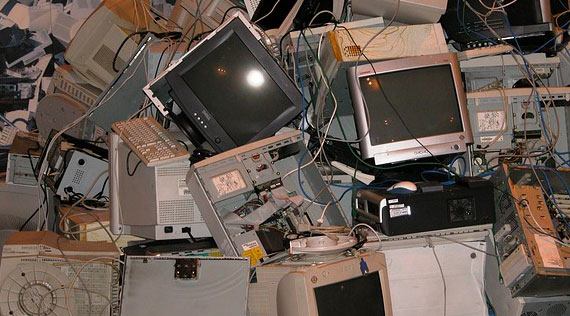
NEW DELHI (Scrap Monster): The Goa State Pollution Control Board (GSPCB) has asked all local bodies to mange electronics waste generated under their jurisdiction. The panchayats and municipal councils in the state have been directed to ensure safe transportation and storage of electronics waste. The local bodies, in turn, will have to ensure that the stored e-waste is shifted safely to authorized collection centres for recycling.
The storage of end of life products may be done in a manner which does not lead to breakage of these products and safe to workers handling such products. The collected fluorescent and other mercury containing lamps, it should be sent only to a recycler. In case a recycler is not available, it may be sent to a treatment, storage and disposal facility (TSDF). Loading, transportation and unloading of e-waste must be carried out in such a way that its end-use is unaffected. Also, the storage area should have fire protection mechanisms in place.
The new E-Waste (Management) Rules 2016 by the GSPCB makes it mandatory for home customers and bulk customers including commercial establishments to maintain proper month-wise records of e-waste generated by them. This record must be submitted to GSPCB on yearly basis. Based on this data, GSPCB will prepare and submit a report to the Central Pollution Control Board (CPCB) before Sep 30th every year. The Board estimates that households and commercial establishments in the state together generate around 900 tonnes of e-waste every year.
The new rule covers two categories of electrical and electronic equipment namely IT and Telecommunication equipment and consumer electronics and electricals such as TVs, Washing Machines, Refrigerators Air Conditioners including fluorescent and other mercury containing lamps.
The key feature of these rules is Extended Producer Responsibility (EPR). It stipulates phase wise collection target of 30% of the estimated quantity of waste generation during the first two years of the implementation of the rules. The target will be raised to 40% during the third and fourth years, 50% during the fifth and sixth years and 70% during the seventh year onwards. It mandates CPCB to prepare specific guidelines for EPR. Additionally, EPR authorization is mandatory and has to be obtained by all the producers of electrical and electronics products including importers and e-retailers.
As per estimates, India generates around 18 lakh metric tonnes of electronic waste every year. Out of this only 5% is handled by certified recyclers, whereas the remaining e-waste is handled by unorganized sector which makes use of primitive and unhealthy dismantling techniques to process them. Incidentally, Goa also features in the list of cities generating largest volumes of electronics waste.
Incidentally, a new report titled “E-Waste Management Market by Type (Trashed and Recycle), by Source (Household Appliances, IT & Telecommunications, Consumer Electronics and Others): Global Industry Perspective, Comprehensive Analysis and Forecast, 2015 – 2021” states that global demand for e-waste management was valued at USD 17.0 billion in 2015, and is expected to reach USD 58.0 billion in 2021, growing at a CAGR of 22.7% between 2016 and 2021. In terms of volume, the global e-waste management market had stood at 86.40 million tons in 2015.
| Copper Scrap View All | |
| Alternator | 0.31 (0) |
| #1 Copper Bare Bright | 3.70 (0.05) |
| Aluminum Scrap View All | |
| 356 Aluminum Wheels (Clean) | 0.71 (0) |
| 6061 Extrusions | 0.62 (0) |
| Steel Scrap View All | |
| #1 Bundle | 475.00 (0) |
| #1 Busheling | 495.00 (0) |
| Electronics Scrap View All | |